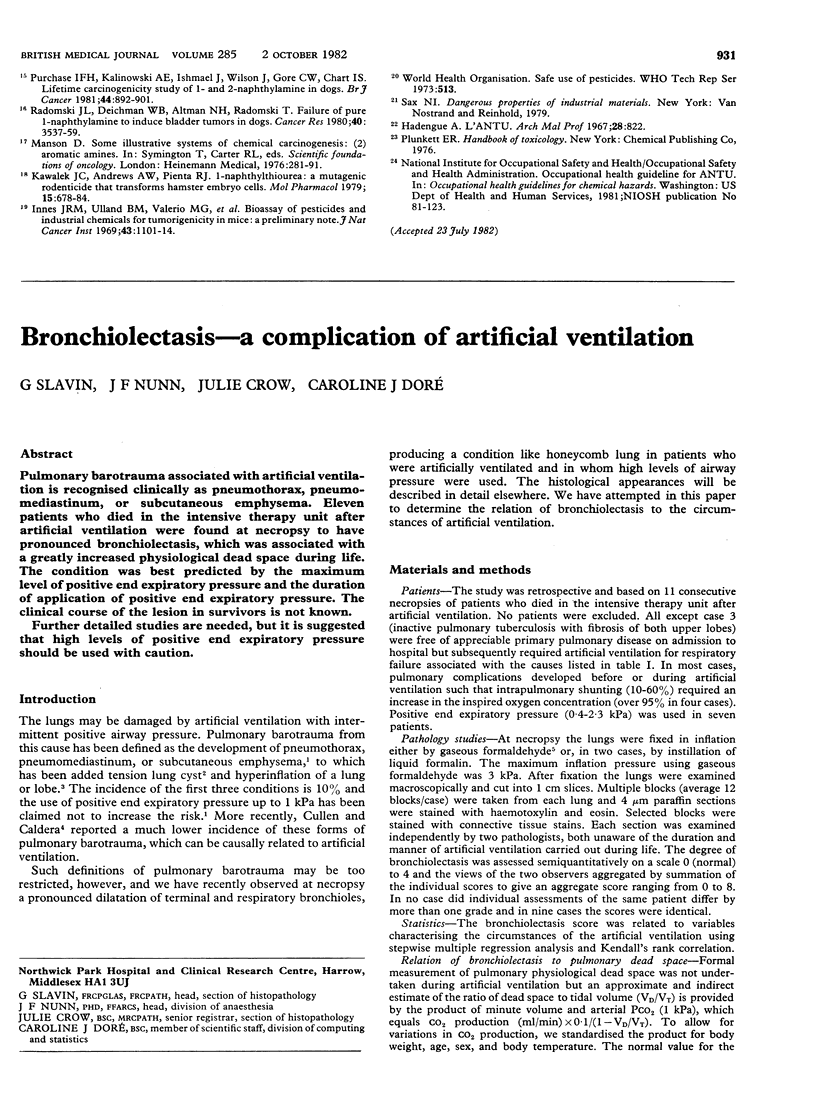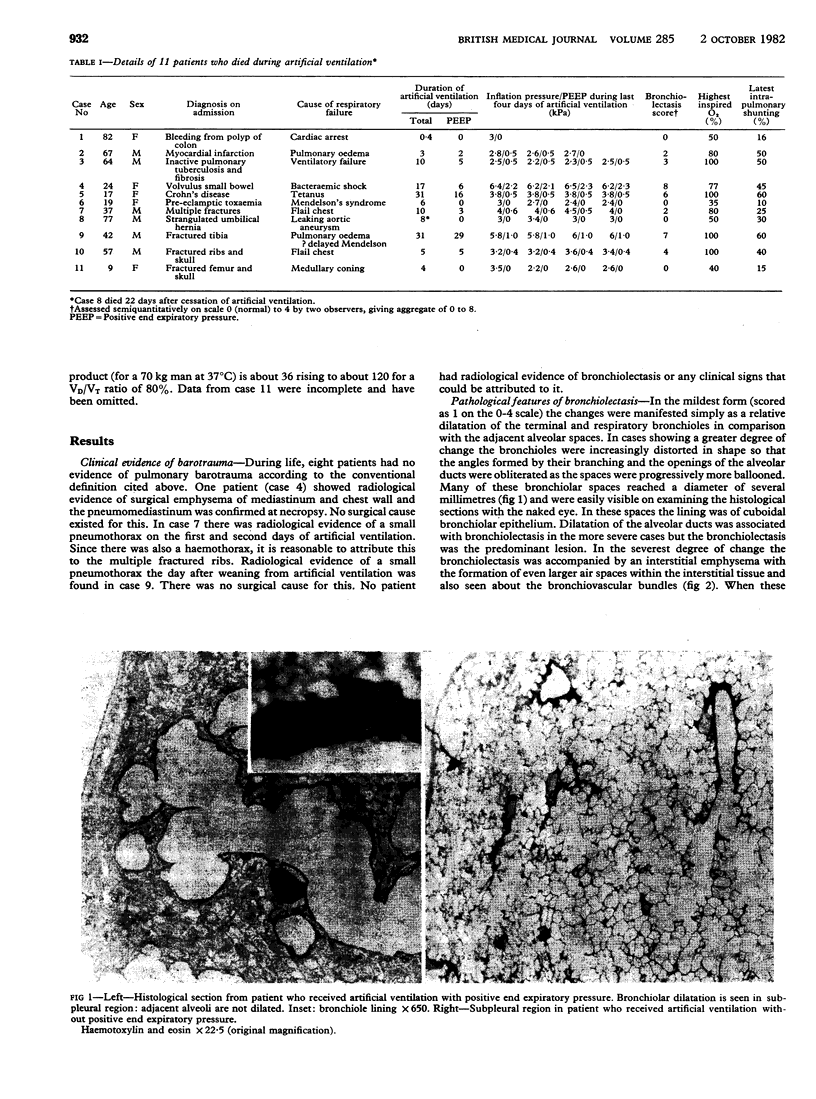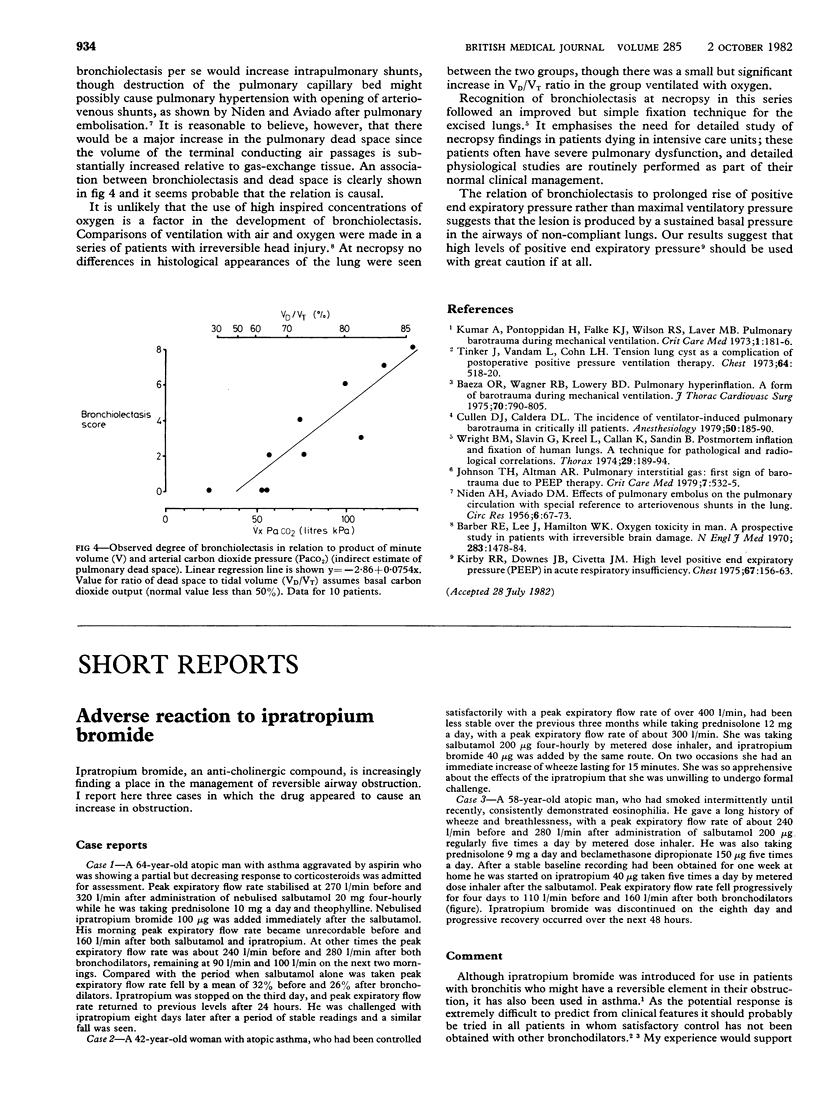Abstract
Pulmonary barotrauma associated with artificial ventilation is recognised clinically as pneumothorax, pneumo-mediastinum, or subcutaneous emphysema. Eleven patients who died in the intensive therapy unit after artificial ventilation were found at necropsy to have pronounced bronchiolectasis, which was associated with a greatly increased physiological dead space during life. The condition was best predicted by the maximum level of positive end expiratory pressure and the duration of application of positive end expiratory pressure. The clinical course of the lesion in survivors is not known. Further detailed studies are needed, but it is suggested that high levels of positive end expiratory pressure should be used with caution.
Full text
PDF



Images in this article
Selected References
These references are in PubMed. This may not be the complete list of references from this article.
- Baeza O. R., Wagner R. B., Lowery B. D. Pulmonary hyperinflation. A form of barotrauma during mechanical ventilation. J Thorac Cardiovasc Surg. 1975 Nov;70(5):790–805. [PubMed] [Google Scholar]
- Barber R. E., Hamilton W. K. Oxygen toxicity in man. A A/Barber RE, Lee J, Hamilton WK: Oxygen toxicity in man. A prospective study in patients with irreversible brain damage. N Engl J Med. 1970 Dec 31;283(27):1478–1484. doi: 10.1056/NEJM197012312832702. [DOI] [PubMed] [Google Scholar]
- Cullen D. J., Caldera D. L. The incidence of ventilator-induced pulmonary barotrauma in critically ill patients. Anesthesiology. 1979 Mar;50(3):185–190. doi: 10.1097/00000542-197903000-00003. [DOI] [PubMed] [Google Scholar]
- Johnson T. H., Altman A. R. Pulmonary interstitial gas: first sign of barotrauma due to PEEP therapy. Crit Care Med. 1979 Dec;7(12):532–535. [PubMed] [Google Scholar]
- Kirby R. R., Downs J. B., Civetta J. M., Modell J. H., Dannemiller F. J., Klein E. F., Hodges M. High level positive end expiratory pressure (PEEP) in acute respiratory insufficiency. Chest. 1975 Feb;67(2):156–163. doi: 10.1378/chest.67.2.156. [DOI] [PubMed] [Google Scholar]
- Kumar A., Pontoppidan H., Falke K. J., Wilson R. S., Laver M. B. Pulmonary barotrauma during mechanical ventilation. Crit Care Med. 1973 Jul-Aug;1(4):181–186. doi: 10.1097/00003246-197307000-00001. [DOI] [PubMed] [Google Scholar]
- NIDEN A. H., AVIADO D. M., Jr Effects of pulmonary embolism on the pulmonary circulation with special reference to arteriovenous shunts in the lung. Circ Res. 1956 Jan;4(1):67–73. doi: 10.1161/01.res.4.1.67. [DOI] [PubMed] [Google Scholar]
- Tinker J., Vandam L., Cohn L. H. Tension lung cyst as a complication of postoperative positive pressure ventilation therapy. Chest. 1973 Oct;64(4):518–520. doi: 10.1378/chest.64.4.518. [DOI] [PubMed] [Google Scholar]
- Wright B. M., Slavin G., Kreel L., Callan K., Sandin B. Postmortem inflation and fixation of human lungs. A technique for pathological and radiological correlations. Thorax. 1974 Mar;29(2):189–194. doi: 10.1136/thx.29.2.189. [DOI] [PMC free article] [PubMed] [Google Scholar]




